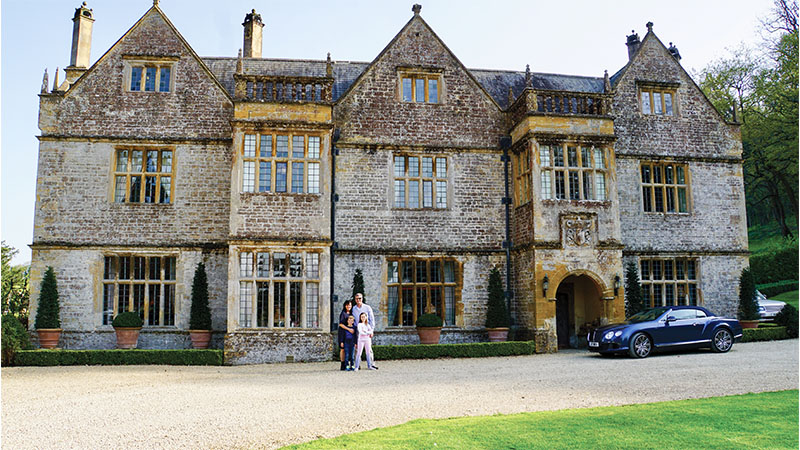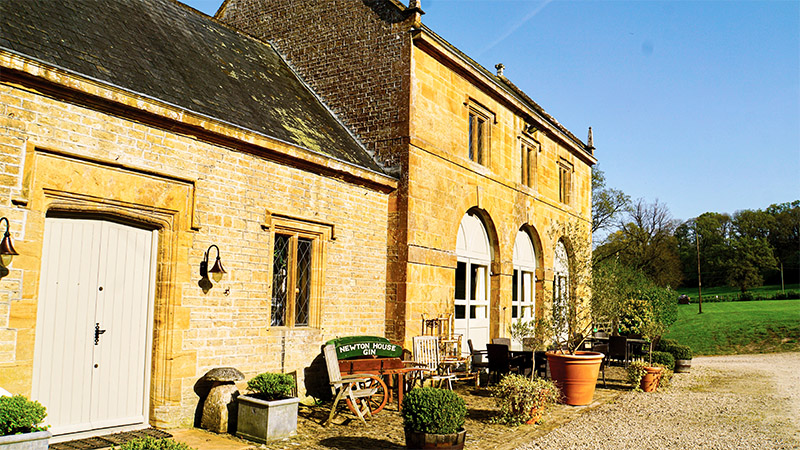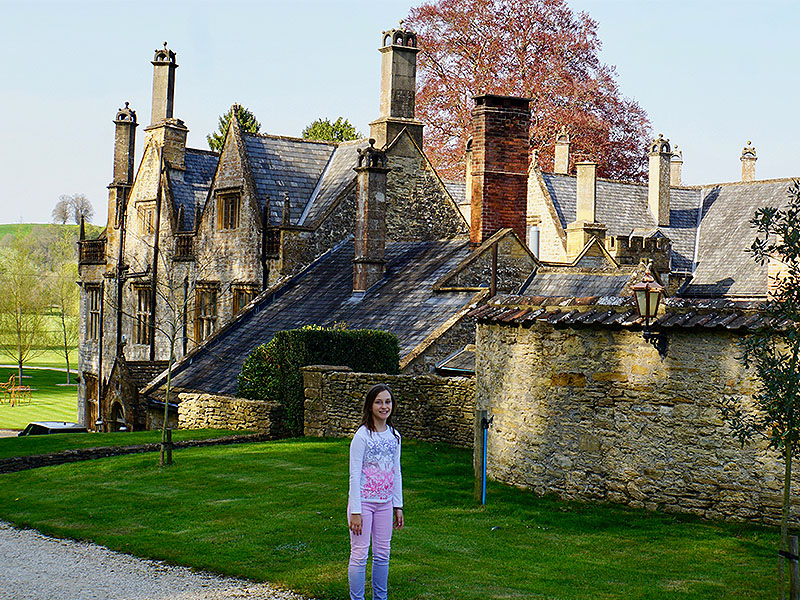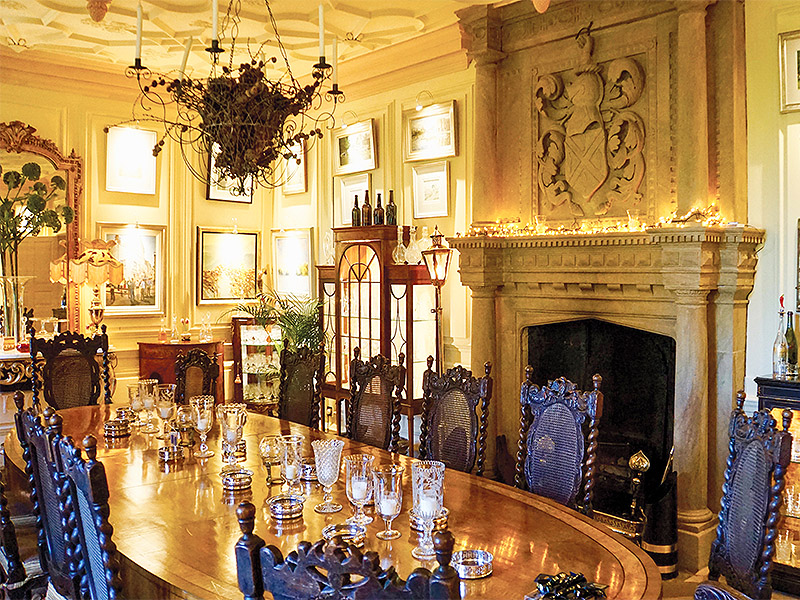Tracing your family roots to an ancestral home is not your usual family holiday, but MELINDA MURPHY found out that a journey down memory lane can be one of the most special vacations of all.
“So this is it. This is the home my ancestor built.” That’s a powerful statement. To know that my 11th great-grandfather built a proper English manor home in 1608 and that more than 400 years later I was walking through the hallways was pretty darn cool. It gave me chills, actually.
Starting the research
Our unusual family vacation to England all started with a cryptic message from my cousin Dana.
“We did it again!”
“Did what?”
“We bought each other the same gift!”
Dana and I have a history of buying each other exactly the same thing – a piece of jewellery or Christmas decorations perhaps. It’s odd, as we live on the other side of the planet now and don’t actually check in with each other nearly often enough.
Dana is almost exactly a year younger and our birthdays are three days apart. We grew up a block away from one another back in Midland, Texas. And all these years later we still have a special connection.
This year’s identical pair of gifts was special though. We bought each other genetic tracking through the genealogy website ancestry.com. My guess is we were both prompted by the death of her father, the last of his generation. I think we were both had a strong need to reconnect to our heritage.
So, when we next saw each other later that month at Christmas, we took the little plastic vials that had been supplied by the website, added our saliva samples and mailed them off to the lab. A few weeks later, we got our results. As a Murphy, I knew I was Irish, and I suspected I was also a bit Scottish. Surprisingly, I’m mostly English. And I don’t have a drop of Native American blood, which would have disappointed my grandmother. The poor woman went through life with the name Pocahontas all because of some erroneous family lore that we were related to the great Native American princess.
Digging deeper
Of course, I got a little carried away (obsessed really) and started digging through my ancestral chart online. The information available is truly amazing. You can see photos of family graves, death certificates, birth certificates and so much more. The website connects you to other relatives, and provides hints that make tracing ancestry really easy. I was able to trace all four of my grandparents and what I found simply shocked me.
All four sides of my family go back to the early 1700s in America, which is pretty unusual these days in the States. That means all sides had members who fought in the Revolutionary War. And get this: one relative on my dad’s side was a settler; the manifest document of her journey from England to America in 1653 is available to read online. Wow! I’m related to a Pilgrim. No wonder I love Thanksgiving so much. I truly had no idea.
I’d always known about Robert Harbin, my mother’s relative who, in the early 1600s, built Newton Surmavilla, a property in Yeovil in the English county of Somerset that’s so big it has its own Wikipedia page. To get directions to it, you only have to type the name into Google Maps, rather than the address.
The house was considered the family legend in some ways. I was handed down a badly-typed family tree that showed how we were connected to the manor, which included awful, faded black-and-white photos of the home. And, when I was a teenager, my mother wrote to the owner and we visited her at the house, which at the time was very run down. She only let us into the first dark and dank parlour. But even then, I could tell it was once a great estate, the kind of home you’d see in Downton Abbey – a true manor.
Truth or legend?
Still, I was a bit worried that this part of our family lore mightn’t really be true. Remember Pocahontas? So, I was determined to find out if I really was related to that house. I was able to learn so much more as an adult with access to the internet, which of course wasn’t available when my grandfather originally looked into our heritage.
It turns out, my family settled in Texas before it was a state. One family member took a boat from the East Coast of the US through Panama to get to California so he could make his fortune in gold (he didn’t). One poor fella in my family had his cause of death listed as “death by dragging” – wonder what that means exactly? Several were killed in America’s Civil War, all fighting for the South. In fact, it seems I’m the only person on one side of my family (besides Dana) to ever move north of the Mason-Dixon line, much less overseas.
Maybe my favourite uncovered fact was that Robert Harbin’s great-great-grandson moved from England to the US and bought a piece of land for 45 pounds sterling. Today, that land would be worth a billion dollars. Why? Because it’s where the US White House and Capitol building now stand.
Return to the manor
This year, my husband had to work in London during our children’s spring break. Since I was all fired up about teaching my children our roots, we decided to visit the manor once again. The house left my family for the first time in 2007 when it was sold to Robin and Jane Cannon, who have set about restoring it. There’s a little B&B on the property, but it only accommodates two people. I emailed and asked if they might make an exception for us as my ancestors built the house. Jane replied: “Unfortunately, there isn’t enough room, but I’d be very happy to show you the home.”
So, on Good Friday, we knocked on the door and got the eye-popping tour, which was like walking not only through my family history, but the history of England. Jane was a fountain of information. She and her husband really have saved the home for generations to come and, even though my own line is a long way removed from the house, I’m still thankful that “my family home” has been rescued.
The amount of work it’s taken to restore the property is mind-boggling. They’ve done seemingly simple things such as fix the roof and clean up the sprawling 60- acre garden to much more complicated renovations such as adding all the modern conveniences it was lacking.
“When we bought the house, there was no heat and no bathrooms,” Jane told us. “The owners had always been bed-bathed by their servants. The kitchen was just an open hearth. Everything was painted black because when Queen Victoria died, everybody was expected to paint everything black as a sign of mourning. That’s why the railings in London subway stations are black even now.”
Passing from room to room, she pointed out beds that were original to the home, my family crest carved into the walls and little things they’d found on the grounds that have the family name on them.
Now, the 15,000-square-foot house is a showcase for the Cannons’ massive art collection. The stables have been turned into garages to house their antique roadsters. One of the outbuildings is a gin mill and bar where they host gin-and-jazz nights. My daughter was enthralled to learn how gin was made (though I’m not sure she even knows what it is…).
Truth is, I was a bit afraid my kids would be bored or that my husband wouldn’t be thrilled about exploring my history. On the contrary, they all absolutely loved it. Sure, the house was cool and the grounds are like something out of a novel, but it wasn’t that. I think we all felt a connection to old roots. There aren’t any other big manors in my family that I know of (no, the White House is not ours), but I think I might want to explore some others ancestral areas or places special to my husband’s family.
I recommend you do the same thing. Getting to know your past really does somehow connect you to your future.
Want to find out about your family? Start with a visit to ancestry.com.
Like this? Read more in our Travel section.
Top travel tips for visiting India
Where to go in London and Liverpool
Top places to visit in Hong Kong
Subscribe to Expat Living so you never miss an issue!









